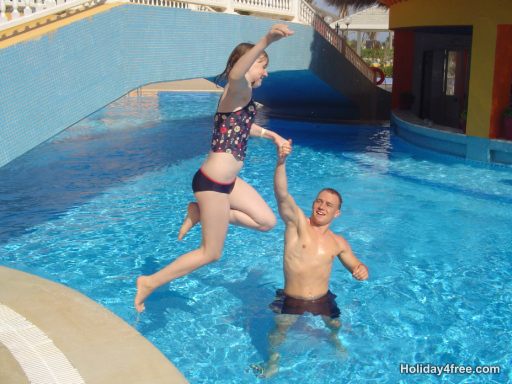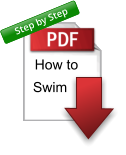








Tips from swimming lessons
15. The brave jump
The jump is a “reward flight” for learning to swim. Some children find it easy to jump, while other children need a little support. To encourage them, the swimming teacher can take hold of both the learner's arms for the first jumps and make sure that their head doesn't go under. Beginners also need to first develop a sense of safety and trust when jumping. The next step is to slowly let go of one hand and the head can be allowed to sink a little deeper under the water each time as the jumps progress. To begin with, a child who doesn't feel confident enough to do this can also slip into the water from a sitting or squatting position at the pool edge. Once they have managed several jumps with assistance, the child can jump into the water completely alone. Extra tip from practical experience: Many parents stand at the edge of the pool for a long time, trying to talk their child into jumping. The longer the child stands there, the harder it is for them to decide to do it. After blowing and diving have been practiced thoroughly, the learner can be taken by the hand to inspire trust. A technique that has proved effective is to simply count up to 3 and to then gently let the child sink into the water up to their stomach. After each jump, the child can be encouraged with a good helping of praise. Adult learners can squat down at the pool edge, hold onto the edge and then slowly jump into the water. This exercise should be repeated until they have built up a strong enough sense of safety: because when you trust the water, diving is really enjoyable. After the first jumps have been managed safely, different jumping techniques can be tried out. It is important to be able to jump in many different ways, as every jumping technique has special advantages and areas of application. Those who prefer to jump into the water without diving deep can use the step jump or "package jump". As the legs are drawn up and embraced by the arms, the package jump is particularly safe. A racing dive helps the swimmer to go far and shallow, while the header dive is useful for gliding deep into the water with momentum and being able to pick up objects from the pool bottom. The header dive and the feet-first jump are great for diving or jumping from the diving platform. Later on, the range of dives and jumps can be expanded. It's great fun to dive into water with a backflip, a roll or a corkscrew dive. Learning these different dives also teaches safety and playfully trains learners to cope with accidentally falling into water. Swimmers should never dive where others are diving or in unfamiliar waters. Next step: How to swim Additional tip: Enjoying the water
Ad
Ad
Ad
How to Swim 15/20
swimming trainer
The tips have been successfully applied
and further developed with over 1,000
children over a period of 10 years.
© Holiday4free.com

Ad
swimming trainer




Home
Ad















